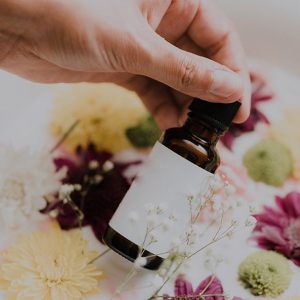Hair loss has been a hot topic in the past year, and it is no longer just an issue that concerns middle-aged and elderly people. Even those born in the 1990s and 2000s are experiencing hair loss. Thus, how to promote hair growth has become a common concern. Among the many types of hair loss, the most common is seborrheic hair loss. So, what is seborrheic hair loss? What are its symptoms? And how can we promote hair growth? Today, let’s explore these questions.

I. What is seborrheic hair loss?
Seborrheic hair loss, also known as androgenic or genetic hair loss, is affected by both androgens and genetic factors, as the name suggests. In traditional Chinese medicine, it is also known as “pillar moss” or “worm-eaten hair loss.”
This hair loss is mainly caused by our body’s androgens, which combine with 5α-Reductase to be reduced to dihydrotestosterone (DHT). DHT continuously attacks the hair follicle, causing it to shrink, and ultimately resulting in hair loss.
In addition, some people with seborrheic hair loss have normal androgen levels, but they carry the androgen receptor gene and are more sensitive to androgens, which can cause the hair follicles to shrink and eventually lead to hair loss.
II. What are the symptoms of seborrheic hair loss?
Both men and women may experience seborrheic hair loss, but men are more likely to experience it. As the most common type of hair loss, seborrheic hair loss has the following symptoms:
1、Men: Hair loss usually starts from the top of the head or the temples and gradually develops into a Mediterranean or M-shaped hair loss pattern.
2、Women: Hair loss usually gradually spreads from the top of the head to the surrounding areas, but balding is uncommon, and the hair will become increasingly sparse.
3、Hair quality: As the degree of hair loss worsens, the hair will become finer, softer, and more oily.
4、Time: Seborrheic hair loss is more common during puberty or post-puberty, between the ages of 20 and 30.
III. How can we promote hair growth for seborrheic hair loss?
Today, the treatment for seborrheic hair loss mainly consists of drug therapy and hair transplantation, depending on the severity of hair loss.
1、Drug therapy
Drug therapy is usually only suitable for the early and middle stages of hair loss, during which the hair follicles have not closed completely, but are instead in a damaged and atrophied state. By using continuous targeted medication, it is possible to restore the health of hair follicles and grow healthy hair. Commonly used drugs include minoxidil and finasteride (which is specific to male seborrheic hair loss). Since each person’s hair loss situation and constitution are different, it is necessary to strictly follow medical advice for drug use. Generally, it takes more than 3-4 months of continuous medication to see results.
2、Hair transplantation
Hair transplantation is usually suitable for the later stages of hair loss, during which the hair follicles in the balding areas have mostly died and closed, and medication is no longer effective. Therefore, the only way to alleviate the damage caused by hair loss is through hair transplantation. Hair transplantation for seborrheic hair loss patients usually involves the transplantation of hair follicles from the back of the head, as hair follicles in this area are not affected by androgens and have a lower chance of falling out. However, it is important to note that the hair follicles on our scalp are not regenerate, so regardless of whether the hair transplantation is successful or not, the area where the hair follicles are taken from will not grow hair again. Some doctors refer to hair transplantation as “robbing Peter to pay Paul.”
Therefore, it is recommended that you take seborrheic hair loss seriously in the early stages and take appropriate measures to improve it. It is also important to take good care of your hair and scalp on a daily basis to restore your full, thick, and confident hair.








